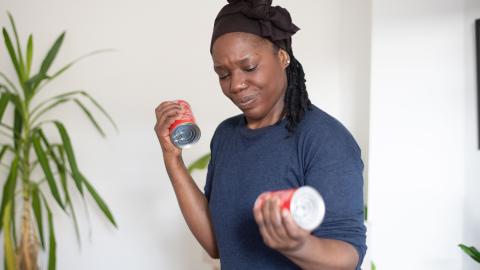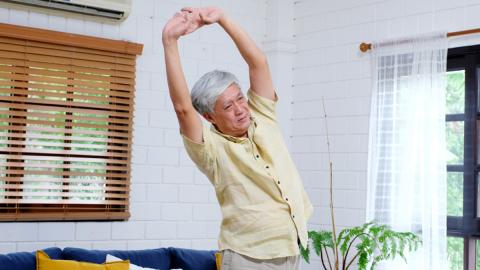Being stronger lets you do more, feel better and stay active, which is why so many people living with a health condition are finding it makes a real difference. Whatever your goal and current activity level, strengthening is for you

It can be done anywhere at any time, and because you can start small and build up gradually, there are strengthening activities to suit everyone.
Long Covid
Please note: for people living with Long Covid symptoms, caution is recommended when approaching strengthening.
Keep it up regularly and you can help keep your heart healthy, boost your brain power, lose weight, maintain bone density, improve your balance and reduce joint pain. Just as importantly, it can start improving your mood straight away.
So whether you used to be active or are unsure how to get started, these pages will help you take your next steps to being stronger your way.
What is strengthening?
Put simply, strengthening is any activity that makes your muscles work harder than they normally do. You know you’ve done enough when you need a short rest before continuing. Over time, strengthening helps make the muscles stronger.
Examples of strengthening
There are lots of things you can do to get stronger and it doesn’t have to involve lifting weights or going to the gym. If you’re putting in extra effort, it counts as strengthening.
It can be part of your daily routine, such as climbing stairs or gardening. Or it can be part of an exercise class or even playing a sport.
Examples include:

Dancing
Hill walking
Cycling
Football
Lifting your own body weight
Standing up from sitting
Exercise classes
Find a strengthening activity you enjoy. If you enjoy it, you’re more likely to stick with it, and gradually build it up over time.
Anyone can do it. And many people with health conditions are finding it makes a real difference. So tailor it to yourself, your condition and what you can do today and you’ll soon be feeling the benefits.
Will I feel the effects afterwards?
You may feel the effects for a few days afterwards. This is normal, and is your body getting used to the new exercise. That’s why it’s a good idea to start slowly and build up gradually and get enough sleep and rest time to allow your muscles to recover in between sessions.
Some people find stretches or a massage help them recover more quickly.
In terms of changes to your body, the feel good factor and boost to brain power are often noticeable straight away but changes to muscles take 6-8 weeks.
If you’re finding it hard to get started, get advice from a physiotherapist near you.
Is strengthening safe for me?
This is an entirely understandable question that many people living with a health condition ask.
The research shows that strengthening is not only safe, but also beneficial - indeed, it may reduce other risks associated with your condition, such as a flaring up of symptoms.
The key is to start slowly, track your progress and gradually increase the amount you do.
If you have any concerns, please do consult a healthcare professional.
Managing bone, joint or muscle pain
If you have bone, joint or muscle pain then have a look at the specific exercises you can do at home, along with links to further support for important factors that are known to contribute to pain, such as mental health and work.



